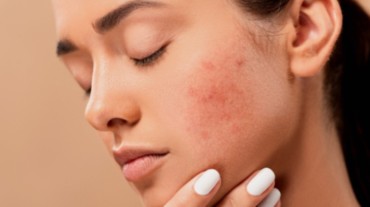Do you ever feel like your skin will remain dry, itchy, or sensitive no matter what you do? Well, these may be the signs of dehydrated skin. Please take note that dry skin and dehydrated skin are two different problems. In case you’re confused, we are going to today discuss the tell-tale signs and symptoms of dehydrated skin so that you can cure the problem effectively.
Health Shots got in touch with Dr Rashmi Ravindra, Consultant Dermatology and Cosmetology, Fortis Hospital, Bannerghatta Road, Bengaluru, who listed signs of dehydrated skin.
Dr Ravindra says, “There are different signs that show skin is lacking hydration. That means dehydrated skin. This occurs when a person loses more water than they take.”
Here are 5 signs that show your skin is lacking hydration:
1. Dry skin
Dehydrated skin can result in dryness. Dr Ravindra says, “There may be a general dryness of the skin, or a patchy dryness, or scaly lesions with or without itching.” This is due to the lack of moisture content in the skin, which happens from within.

2. Dullness
If your complexion looks dull, uneven, and tired, this may be a result of dehydrated skin.
3. Dark circles and wrinkles
When your body is not properly hydrated, dark unde-reye circles can be seen along with sunken eyes. In fact, there will be more fine lines and wrinkles, which means skin has become less elastic.
4. Itching
This is a very common symptom of dehydrated skin. If you’re experiencing patches, scaly and itchy skin, that clearly means your skin is lacking moisture and hydration.
5. Dry eyes, lips and mouth
Dehydrated skin also involves symptoms such as dry eyes, dry mouth, and dry lips as well.
Side effects of dehydrated skin also include:
- Breakouts or acne: Dry skin increases the likelihood that your pores may enlarge, allowing acne-causing germs to penetrate deeper into your skin.
- Redness: Dry skin is typically not dangerous. But if it’s neglected, dry skin can lead to skin dehydration, which can lead to rashes, cracked skin, and redness.
- Inflammation: Skin inflammation and rashes can lead to redness, discomfort, itching, and dryness. They can also be difficult to identify and treat.
- Congestion: Dead skin cells, sweat, pollutants, and sebum accumulate in the pores, causing congestion.
- Increased skin sensitivity: Dehydration makes your skin more sensitive and prone to inflammation. Raised skin sensitivity is characterised by rashes, dry areas, and redness.
What’s the difference between dry and dehydrated skin?
Yes, here is a difference between dry skin and dehydrated skin. In the case of dry skin, the natural oils in the skin are relatively less. It can be seen in conditions associated with eczema or psoriatic skin or due to the natural, frequent washing of the skin or unnaturally dry skin. Whereas in dehydrated skin, there is insufficient water content that is due to insufficient water consumption.

How to hydrate your skin?
1. Drink water: To keep your skin hydrated well, an adequate amount of water intake is a must. Preferably, taking at least three to four glasses of lukewarm water in the morning is of great importance.
2. Antioxidants: Consume an adequate amount of fresh fruits and vegetables in your daily diet which have antioxidant action. This will keep your skin soft and supple.
3. Facial oil: If you have a dry skin tendency you can apply facial oil before and after bath.
4. Keep bath short: Proper bathing is essential to avoid dry skin. But do not spend a long time in the shower. Taking a short quick bath with lukewarm water will be helpful.
5. Moisturizer: Do not forget to apply a good amount of moisturiser and especially apply it immediately after bath. This is for regular hydration and to keep the skin supple.
Takeaway
In the case of dehydrated skin, adequate water intake, a good amount of fruits and vegetables, and topically using a gentle cleanser followed by a moisturiser and applying sunscreen if you’re going out are all ways to hydrate your skin. So, follow these tips.
